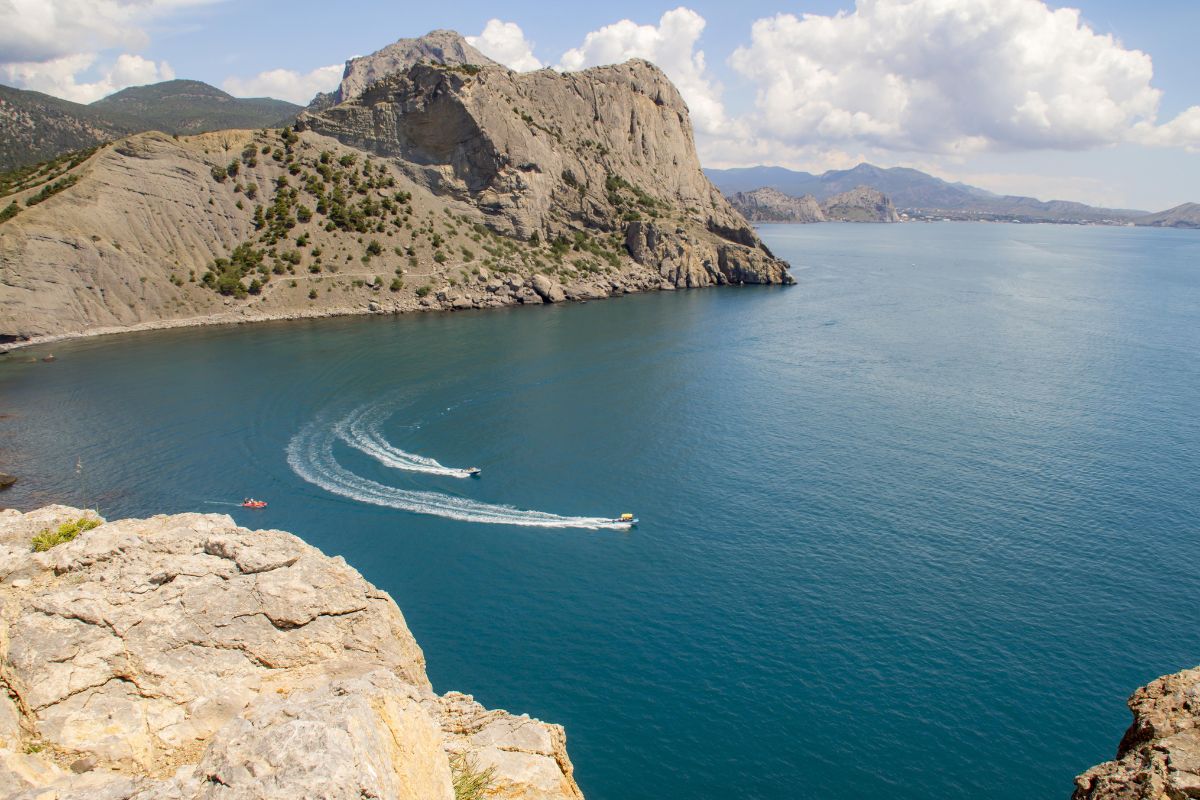
Is Crimea part of Russia or Ukraine? This question has sparked debates and international tensions for years. Crimea, a peninsula on the northern coast of the Black Sea, has a complex history. It was part of the Soviet Union until its dissolution in 1991, after which it became part of an independent Ukraine. However, in 2014, Russia annexed Crimea, a move that led to international condemnation and sanctions. Currently, Crimea is administered by Russia, but Ukraine and most of the world consider it part of Ukraine. This geopolitical tug-of-war makes Crimea a fascinating and contentious topic. Let's dive into 25 intriguing facts about this region to understand its significance better.
Geography and Location
Crimea, a peninsula in Eastern Europe, has a unique geographical and cultural landscape. Here are some fascinating facts about its location and geography.
- Crimea is surrounded by the Black Sea and the Sea of Azov, giving it a strategic maritime position.
- The peninsula is connected to mainland Ukraine by the narrow Isthmus of Perekop.
- Mount Ai-Petri, one of Crimea's most famous peaks, stands at 1,234 meters above sea level.
- The Crimean Mountains run parallel to the southeastern coast, creating a natural barrier against harsh northern winds.
- Crimea has a diverse climate, ranging from temperate continental in the interior to subtropical along the coast.
History and Politics
Crimea's history is rich and complex, marked by various rulers and political changes. These facts highlight some key historical and political aspects.
- The ancient Greeks established colonies in Crimea as early as the 7th century BC.
- Crimea was part of the Byzantine Empire before falling under the control of the Mongol Empire in the 13th century.
- The Crimean Khanate, a vassal state of the Ottoman Empire, existed from 1441 to 1783.
- In 1783, Catherine the Great annexed Crimea to the Russian Empire.
- After World War II, Crimea was transferred from the Russian Soviet Federative Socialist Republic to the Ukrainian Soviet Socialist Republic in 1954.
Cultural Diversity
Crimea is a melting pot of cultures, reflecting its diverse history. Here are some intriguing cultural facts.
- The Crimean Tatars are an indigenous ethnic group with a rich cultural heritage.
- Russian, Ukrainian, and Crimean Tatar are the three main languages spoken in Crimea.
- The peninsula is home to numerous historical mosques, churches, and synagogues.
- Crimean Tatar cuisine features unique dishes like chebureki (fried meat pies) and plov (rice pilaf).
- The Crimean War (1853-1856) inspired famous works of literature and art, including Tennyson's poem "The Charge of the Light Brigade."
Natural Wonders
Crimea boasts stunning natural landscapes and biodiversity. These facts showcase some of its natural wonders.
- The Crimean Peninsula has over 2,500 plant species, many of which are endemic.
- The Swallow's Nest, a picturesque castle perched on a cliff, is one of Crimea's most iconic landmarks.
- The peninsula's coastline stretches for about 2,500 kilometers, featuring numerous beaches and coves.
- The Crimean Cave Towns, such as Chufut-Kale and Mangup-Kale, are ancient settlements carved into the mountains.
- The Nikitsky Botanical Garden, founded in 1812, is one of the oldest botanical gardens in the world.
Modern-Day Crimea
Modern Crimea continues to evolve, with ongoing developments in various sectors. Here are some current facts about the region.
- In 2014, Crimea was annexed by Russia, a move that remains internationally disputed.
- The Crimean Bridge, completed in 2018, connects the peninsula to mainland Russia.
- Tourism is a significant industry in Crimea, attracting visitors with its beaches, historical sites, and natural beauty.
- The region has a growing wine industry, with vineyards producing a variety of wines.
- Crimea hosts several annual cultural festivals, including the Koktebel Jazz Party and the Yalta International Economic Forum.
The Final Word on Crimea
Crimea's rich history, stunning landscapes, and unique cultural blend make it a fascinating region. From its ancient Greek roots to its strategic importance in modern geopolitics, there's a lot to unpack. The peninsula's diverse flora and fauna, coupled with its mix of Tatar, Russian, and Ukrainian influences, create a vibrant tapestry of life. Whether you're intrigued by its historical significance or its natural beauty, Crimea offers a wealth of interesting facts. Understanding this region helps us appreciate its complexity and the role it plays on the global stage. So next time you hear about Crimea, you'll have a deeper insight into what makes it so special. Keep exploring, stay curious, and never stop learning about the world around you.
Was this page helpful?
Our commitment to delivering trustworthy and engaging content is at the heart of what we do. Each fact on our site is contributed by real users like you, bringing a wealth of diverse insights and information. To ensure the highest standards of accuracy and reliability, our dedicated editors meticulously review each submission. This process guarantees that the facts we share are not only fascinating but also credible. Trust in our commitment to quality and authenticity as you explore and learn with us.
